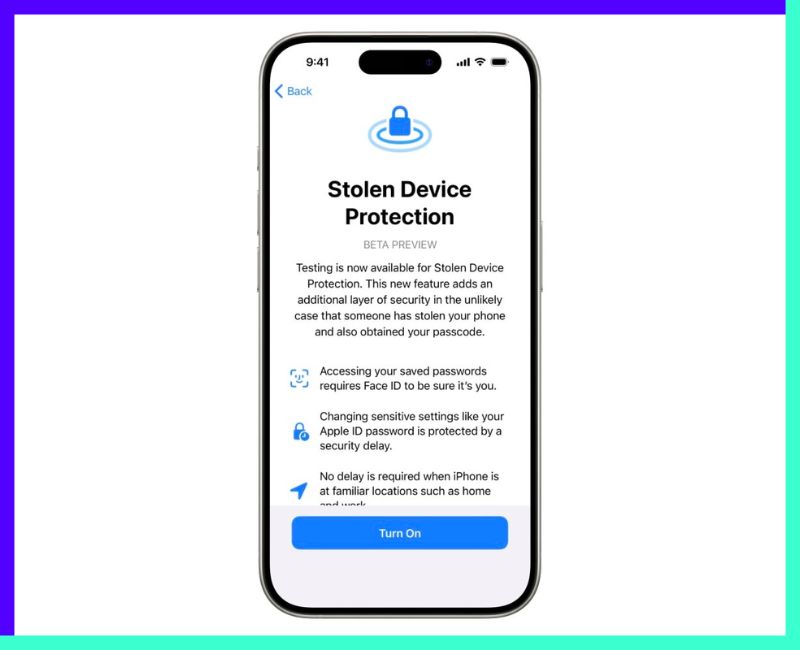In a significant step towards bolstering iPhone security, Apple is set to roll out a novel feature titled ‘Stolen Device Protection’. This innovative security mode is specially designed to safeguard users in scenarios where their private passcode might be compromised by thieves or attackers.
‘Stolen Device Protection’ operates by leveraging the device’s geographical location to determine if the user is in a familiar setting like home or work. If the iPhone is located in an unfamiliar area, the feature activates an additional security layer.
This requires both the passcode and FaceID authentication for performing sensitive tasks such as accessing or modifying stored passwords, or for actions like wiping the phone clean. The feature also introduces a delay mechanism for changing the Apple ID password, further enhancing security.
This development comes in the wake of a report by The Wall Street Journal highlighting a scam tactic wherein attackers, often in social settings like bars, covertly learn the user’s passcode.
They then steal the phone and use the obtained passcode to disable various theft-protection measures like Apple’s Activation Lock or Lost Mode. An iPhone with these protections turned off is considerably more valuable on the black market compared to a software-locked device, which is often sold for parts.
Apple, known for its robust privacy and security measures, traditionally links its stolen device protections, including FaceID, to the user’s passcode.
However, with the introduction of ‘Stolen Device Protection’, Apple adds a significant layer of security, rendering the possession of just the passcode insufficient for gaining full control over a stolen iPhone.






